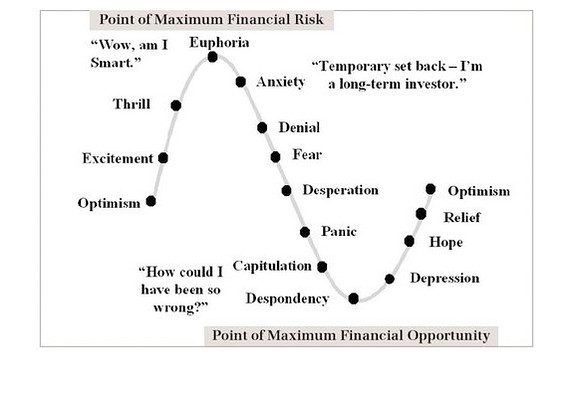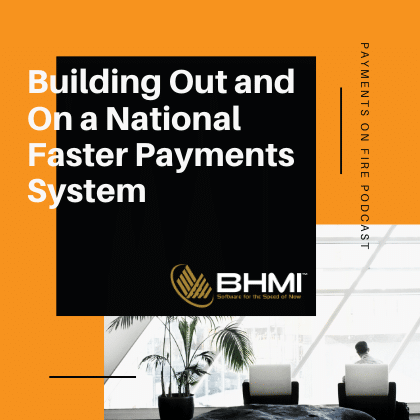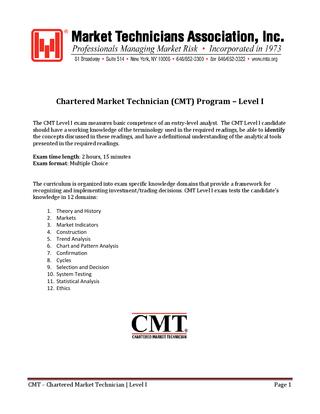Difference between Perfect Competition and Monopoly
Contents
For an individual it would mean a shopping complex or a place where he/she can buy things. But, in economics, the concept of market is very different from this. It doesn’t refers to any geographical area where goods are sold and purchased.

Despite low entry barriers and price-setting by the firms in this structure, a company’s general business decisions do not affect its competitors. Fast food establishments like McDonald’s and Burger King are examples. Despite being in direct competition, they provide identical goods that cannot be replaced. There is no price discrimination by sellers as the prices are determined by supply and demand forces.The monopolist can charge different prices from different groups of buyers.
When there are several vendors selling comparable but non-substitutable goods, monopolistic competition takes place. The general business actions of one firm do not affect its competitors, despite the fact that entry barriers are minimal and the businesses in this structure set prices. In perfect competition, it is very easy for both entries as well as the exit of firms since there are no external factors involved. But in a monopoly, due to the barriers of entry, it is not easy for a firm to both enter as well as exit from the market. In Microeconomics, there are two types of competition- Perfect and Imperfect.
thoughts on “Difference between Perfect Competition and Monopoly”
Besides these, patents are effective in helping companies gain a monopoly over particular industries. In a Monopoly, there is a firm that has no competition at all. It is the only firm that produces that particular product, and it has no rivals in that sector. Most economists concur that a perfect match is improbable in real-world markets, but they dispute how significantly this affects market outcomes. To enter the market, significant capital investments are required. A small fraction of the entire supply is under the control of each firm.

The material and information contained herein is for general information purposes only. Consult a professional before relying on the information to make any legal, financial or business decisions. Khatabook will not be liable for any false, inaccurate or incomplete information present on the website. A hypothetical market system is referred to as perfect competition. There are no monopolies under the scenario of an ideal match.
This system has several crucial aspects, including every company selling the same goods. Since sellers control product pricing, prices are frequently exceedingly high. Monopolies, oligopolies, monopolistic competition, etc., are all examples of imperfect markets. There are a large number of sellers with a large difference between perfect competition and oligopoly number of Buyers offering homogenous products.There is only one single seller of a commodity with a large number of buyers. Here, the supply curve can be identified as all firms sell the desired quantity at the prevailing price.In a monopoly, the supply curve cannot be known because of price discrimination.
Advantages of Imperfect Competition
In times of extra normal profits, new firms will enter in the industry, which will increase the supply and decrease the price, extra normal profits will be gone in such case. In times of extra normal losses, some firms will leave the industry, which will cause fall in supply and increase in price, extra normal losses will be gone in this type of cases. Under oligopoly firms have other competitors, producing nearly substitutes, so the firms have to do a lot of advertising to increase their market share and brand loyalty, this increases the prices of the products. In perfect competition, a firm gets normal profits, and that is in the long-run only. While monopolists get super-normal profits and this is because there is a huge difference between the marginal cost and the price of the products. The oil business, grocery chains, wireless service providers and tyre manufacturers are a few examples of oligopolies.

In the oligopoly market, selling costs such as advertisement, promotion, sales, etc to sell the product are determined by the firms. In the oligopoly market, once prices of the products are fixed by the firms it is normally not changeable. Under Monopolistic Competition, firms compete with each other without changing prices. They may initiate different program schemes, gift schemes, or promotional schemes Thus, firms compete in every possible way to attract a large number of customers and gain maximum possible market share. Under monopolistic competition, firms spend large amounts of money on advertisements of their product to attract more and more customers. Every firm tries to promote its product through an advertisement for which it bears some extra cost over and above its cost of production.
Differences between Monopoly and Perfect Competition
It is occasionally used as a benchmark to assess the efficacy and efficiency of actual markets in welfare economics and applied economics for public policy. Suppose you are entering in an industry as a Producer, Then you must know about the markets. When there is identical or Homogeneous products, there is no need to do advertising. A Firm under perfect competition earns only Normal Profits in the long run. In case there is interference, it is said to be Imperfect competition. While Perfect Competition isn’t further categorized into sub-categories, Imperfect Competition could mean Monopoly, Duopoly, Oligopoly, or Monopolistic Competition.
- This means no producer or seller is able to charge higher price for the product.
- Governments may also regulate market conduct, which includes controlling firms’ pricing and production policies or providing incentives for appropriate conduct.
- The information, product and services provided on this website are provided on an “as is” and “as available” basis without any warranty or representation, express or implied.
- This kind of interdependence makes it very difficult to specify the any relationship between the price and quantity demanded.
This is also a feature of perfect competition, buyers and sellers have the complete knowledge that the products are homogeneous and other important information related to price, quality etc. Because of the product differentiation, firms can fix higher prices for their products, this gives the firms partial control over price, it also helps firms to create brand loyalty. Brand loyalty can be achieved by advertising and providing better products than their competitors. In a monopsony market, a single buyer makes up a significant portion of the total volume of products and services purchased. Since there is only one buyer and many sellers, buyers have a substantial amount of market influence.
Imperfect Competition Market Structures
Sellers can agree on prices and locations, which opens the door to the prospect of sharing products on the market. A more significant price can be imposed on the products, producing more profits. It allows for the imposition of a greater price on the goods, which increases profits.
This market has strong competition in the market.There is no competition in the market. FCI expects to earn Rs 3,400 cr from wheat exportsThe tenders for export of 9.9 LT of wheat have already been floated by the three trading firms, of which tenders for about 4 LT have already been awarded. The inverse relationship between unemployment rate and inflation when graphically charted is called the Phillips curve.
Oligopoly – Oligopoly is a form of market in which there are a few big firms and a large number of buyers of a commodity . Price and output decision of one firm significantly impacts the price and output of decisions of the rival firms in the market. There is a high degree of interdependence among the competing firms, Price and output policy of one firm depends on the price and output policy of the other’s. Monopoly – It is a form of market in which there is a single seller of a product with no close substitutes. For example Railways in India are a monopoly industry of the government of India. In perfect competition, at equilibrium, the price of the product is equal to the marginal cost , while in monopoly, it is higher than the average cost .
As there are few sellers and everyone is familiar with the goods, there is rivalry among them. There is no agreement between any firms regarding quality or price. Some examples of monopoly in India are Railways, Hindustan Aeronautics Limited, Coal India, and Oil Marketing Companies.
Oligopoly:
Also, due to the very high number of sellers, there can be no agreements among them. Furthermore, the Swiss economist Leon Walras, often regarded as the father of modern mathematical economics, accepted and popularised many of his theories. In this market, close substitutes are available.There are no close substitutes for the products in this market. Here, the sellers don’t have any control over the price.In this market, the seller has full control over the price.
High barriers to entry into the monopoly market leave a “mono-” or lone company standing so there is no price competition. The supplier is the price-maker, setting a price that increases profits. Market structure means how firms are differentiated and categorized based on the type of goods they sell (homogeneous/heterogeneous) and how their functions and operations are affected by external factors and elements. Market structure makes it easier to understand the different characteristics of diverse markets. In this article, we will discuss the four different types of market structures namely perfect competition, monopolistic competition, monopoly, and oligopoly. When a market, whether it be hypothetical or actual, deviates from the idealized principles of neoclassical perfect competition, imperfect competition is present.
Market structure in economics refers to the degree and nature of competition in the market for goods and services. The structures of the market both for goods and services are determined by the nature of competition prevailing in a particular market. Under perfect competition, firms can’t charge high prices as both sellers and buyers have perfect knowledge about the goods and their prices. When there is just one supplier in the market for a certain commodity or service, it is considered to be the most extreme case of imperfect competition. In essence, a provider that holds a monopoly on the delivery of an item or service has total control over prices. In economic theory, imperfect competition is a type of market structure that illustrates some, but not all, characteristics of competitive marketplaces.
Due to the limited number of providers, which restricts customers’ purchasing options, the suppliers have significant, albeit not total, control on pricing. Partial control over price leads to Downward Sloping https://1investing.in/ Demand Curve of the firm, quantity sold increases when price is reduced and decreases when price is increased. Buying a product from one seller or the other doesn’t involve any extra transportation cost.
When the product is homogeneous, a firm has no control over price, just a little bit increase in price will shift its buyers to other firms identical product. The market share of each firm is so significant that it affect the price and output policy of the other firms significantly, so there is a very high degree of interdependence among the competing firms. Oligopoly refers to a market form in which there are few sellers selling either in homogeneous or differentiated products and there is a large number of buyers.




